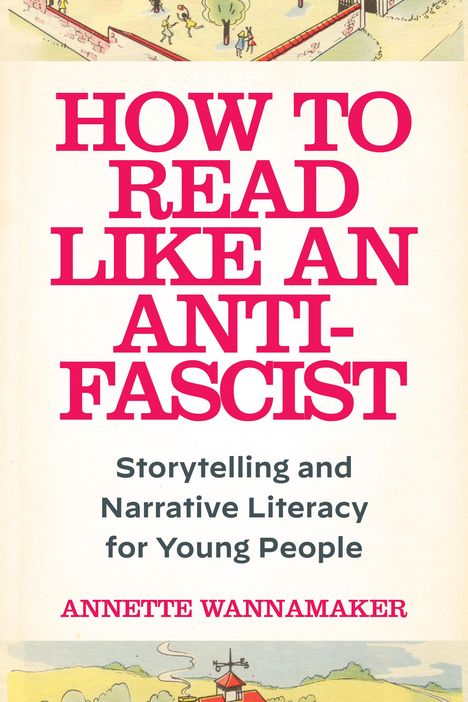Annette Wannamaker: How to Read Like an Anti-Fascist, Gebunden
How to Read Like an Anti-Fascist
- Storytelling and Narrative Literacy for Young People
(soweit verfügbar beim Lieferanten)
- Verlag:
- Fordham University Press, 06/2025
- Einband:
- Gebunden
- Sprache:
- Englisch
- ISBN-13:
- 9781531509798
- Artikelnummer:
- 12014198
- Umfang:
- 224 Seiten
- Ausgabe:
- New
- Gewicht:
- 417 g
- Maße:
- 229 x 152 mm
- Stärke:
- 16 mm
- Erscheinungstermin:
- 3.6.2025
- Hinweis
-
Achtung: Artikel ist nicht in deutscher Sprache!
Weitere Ausgaben von How to Read Like an Anti-Fascist |
Preis |
|---|---|
| Buch, Kartoniert / Broschiert, Englisch | EUR 23,42* |
Klappentext
On the urgent need to promote critical reading skills amidst rising authoritarianism
Children's author Philip Pullman famously said that "There are some themes, some subjects, too large for adult fiction; they can only be dealt with adequately in a children's book." While the recent rise of fascist ideology in the United States might seem a subject too large and adult to be dealt with in literature for children or teens, Annette Wannamaker proposes in How to Read Like an Anti-Fascist that there are books aimed at future generations which critique and counter fascist propaganda and mythmaking.
Works of literature can reflect fascist ideology and promote it as well, but Wannamaker proposes that some books also offer tools for understanding it. Books written for beginners can introduce readers to complex concepts, break big ideas into manageable parts, and teach readers how to read the world outside of the book. Antifascist books are ones that analyze fascistic rhetoric and storytelling, educate about America's long history of authoritarianism, and highlight various facets of fascism such as scapegoating others and reasserting patriarchal power.
From "The Emperor's New Clothes" and the tales of Superman to Mildred Taylor's Roll of Thunder, Hear My Cry , the 1619 Project and contemporary works such as All Boys Aren't Blue and Donald Builds the Wall, Wannamaker shows how the ethos of authoritarianism is characterized by a strict hierarchy that places children at its very bottom. In doing so, she argues convincingly that books written for young people can provide a particular view from the bottom, a perspective well-suited to interrogating systems of power.


